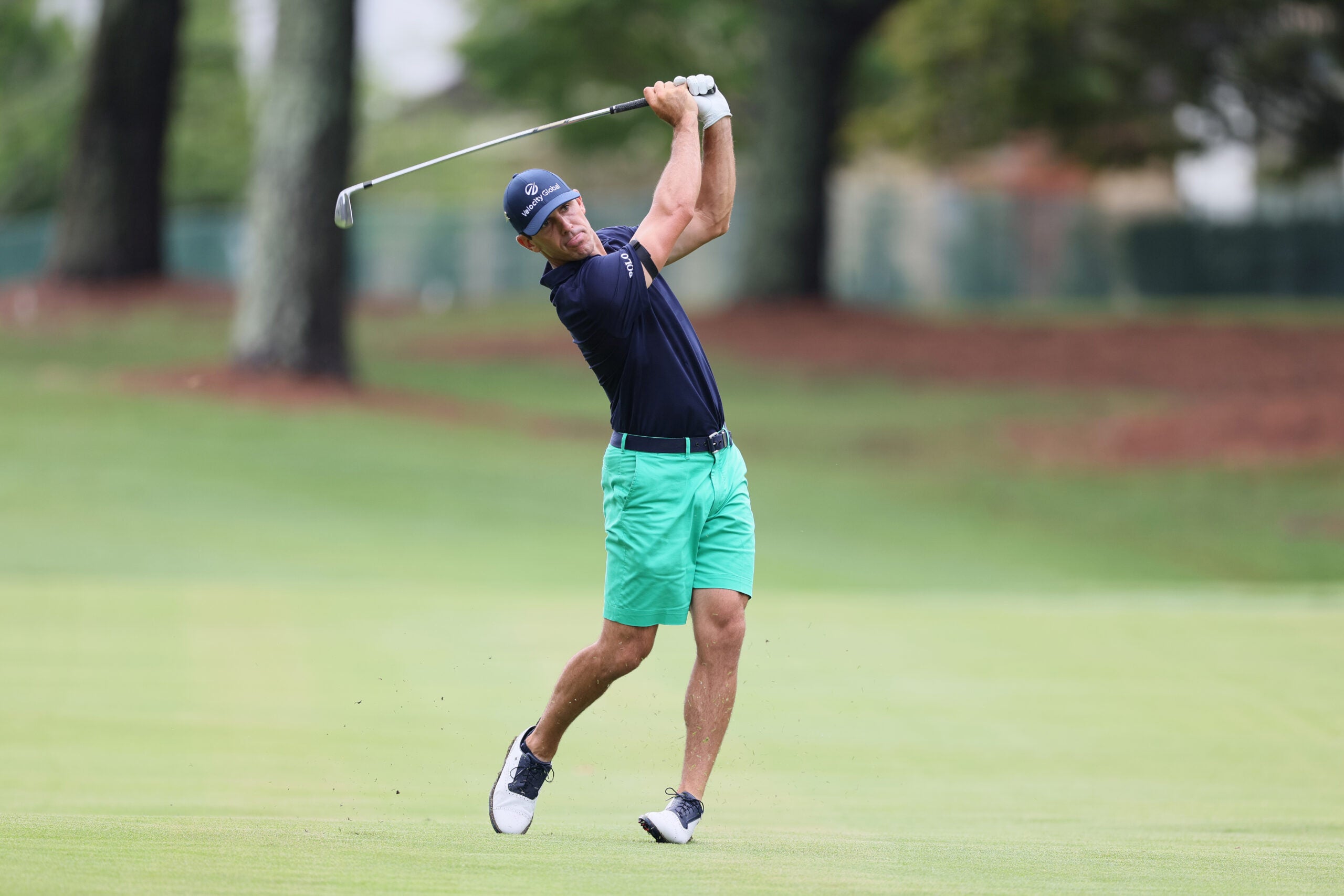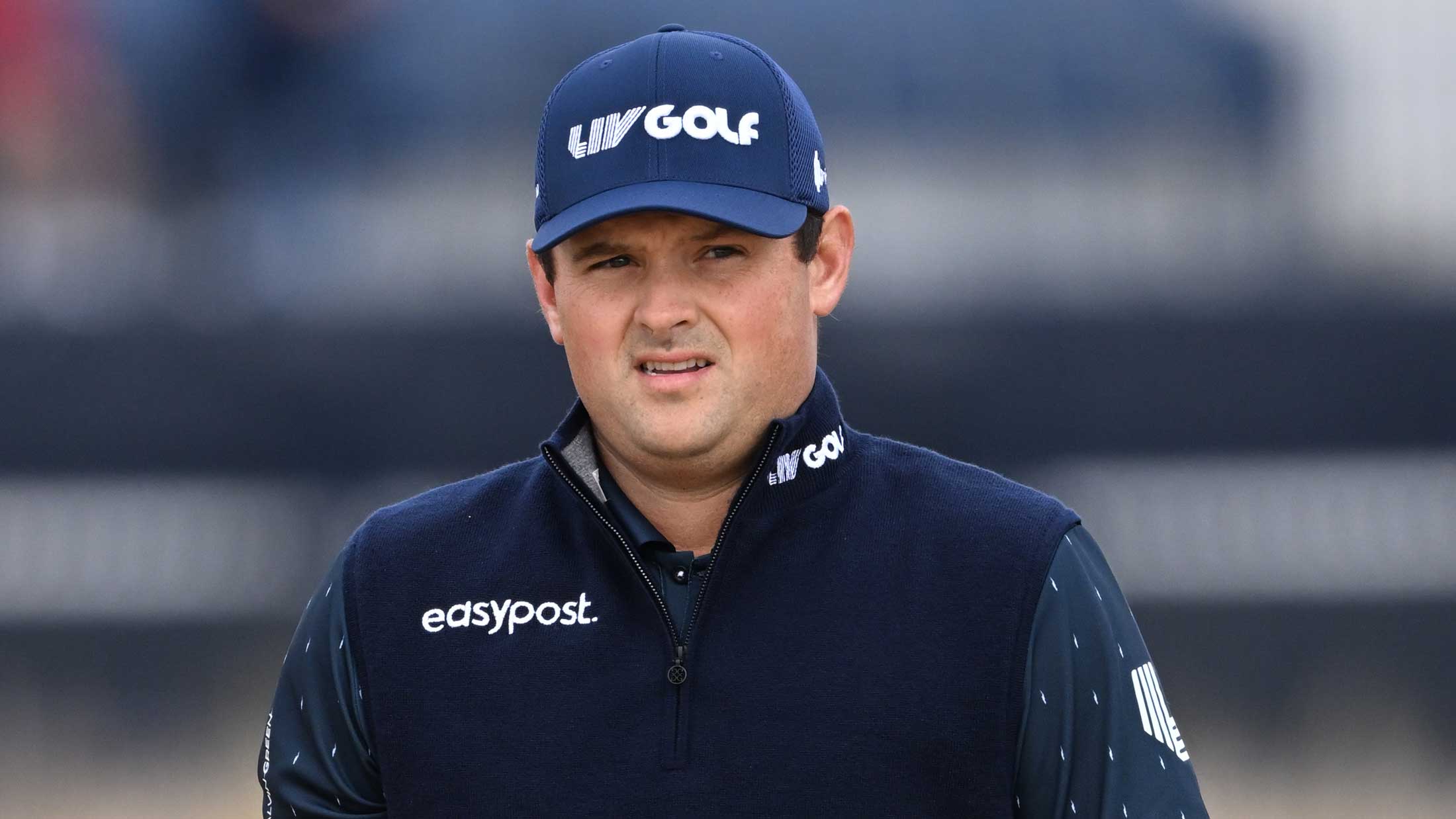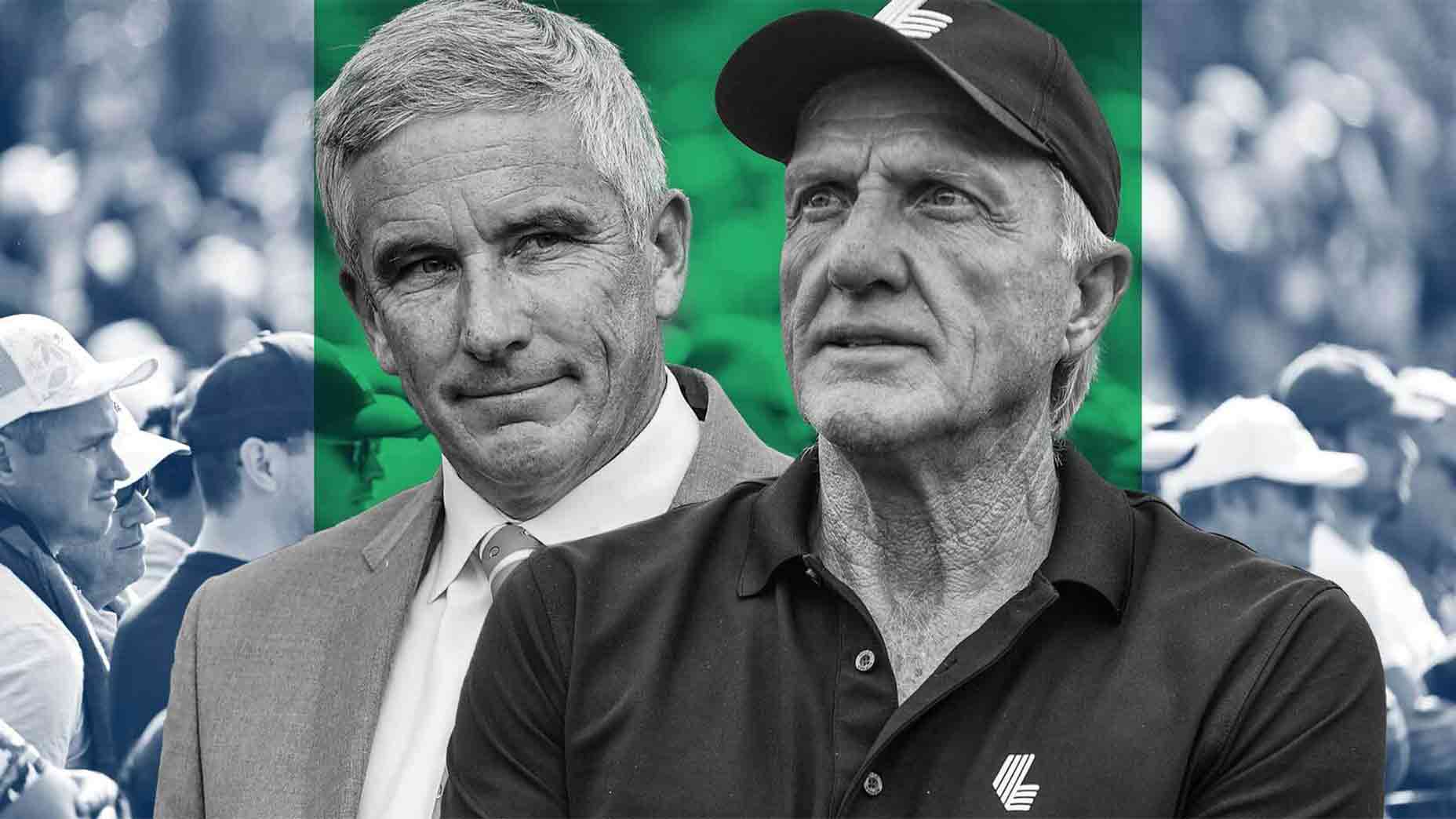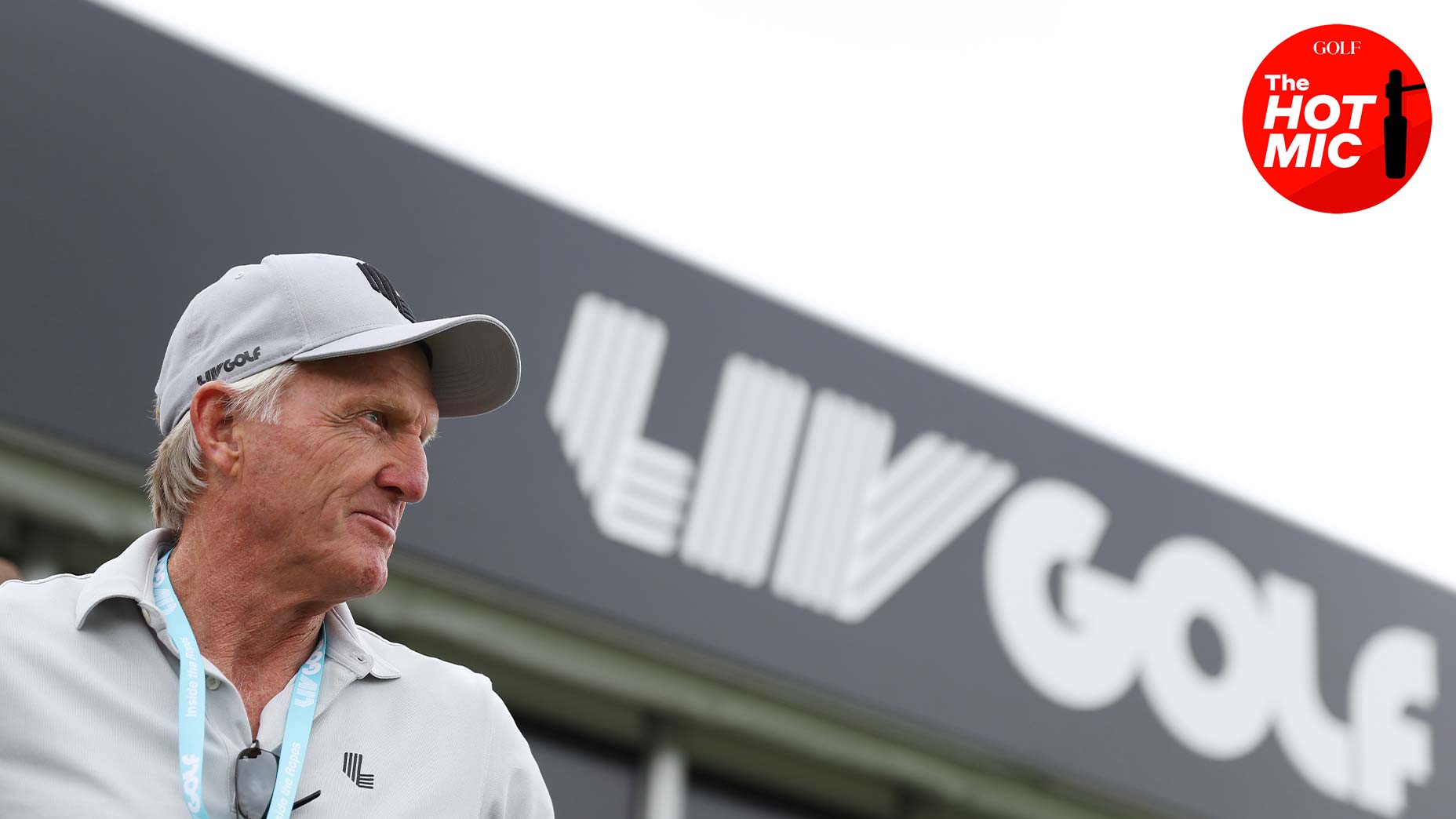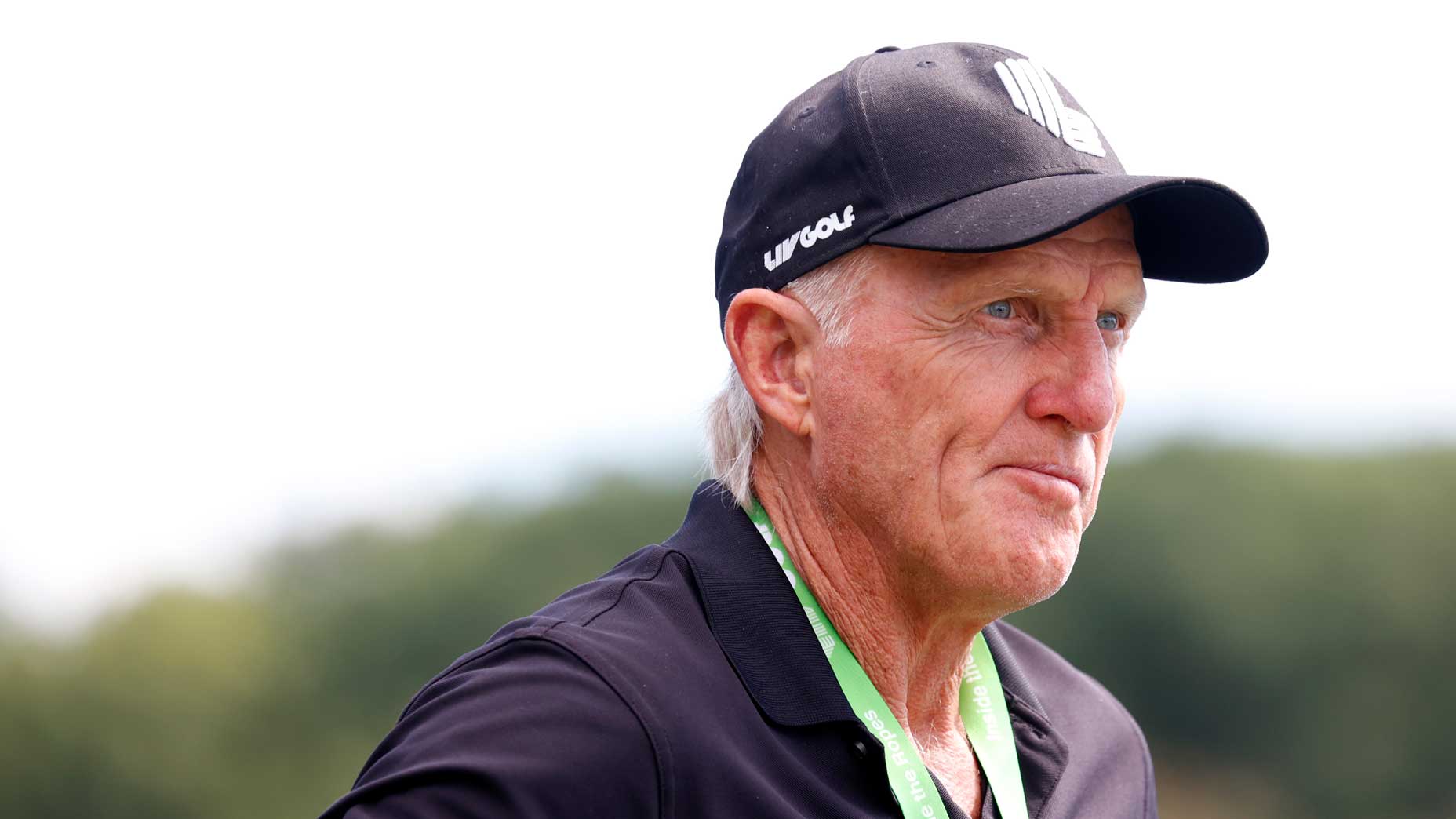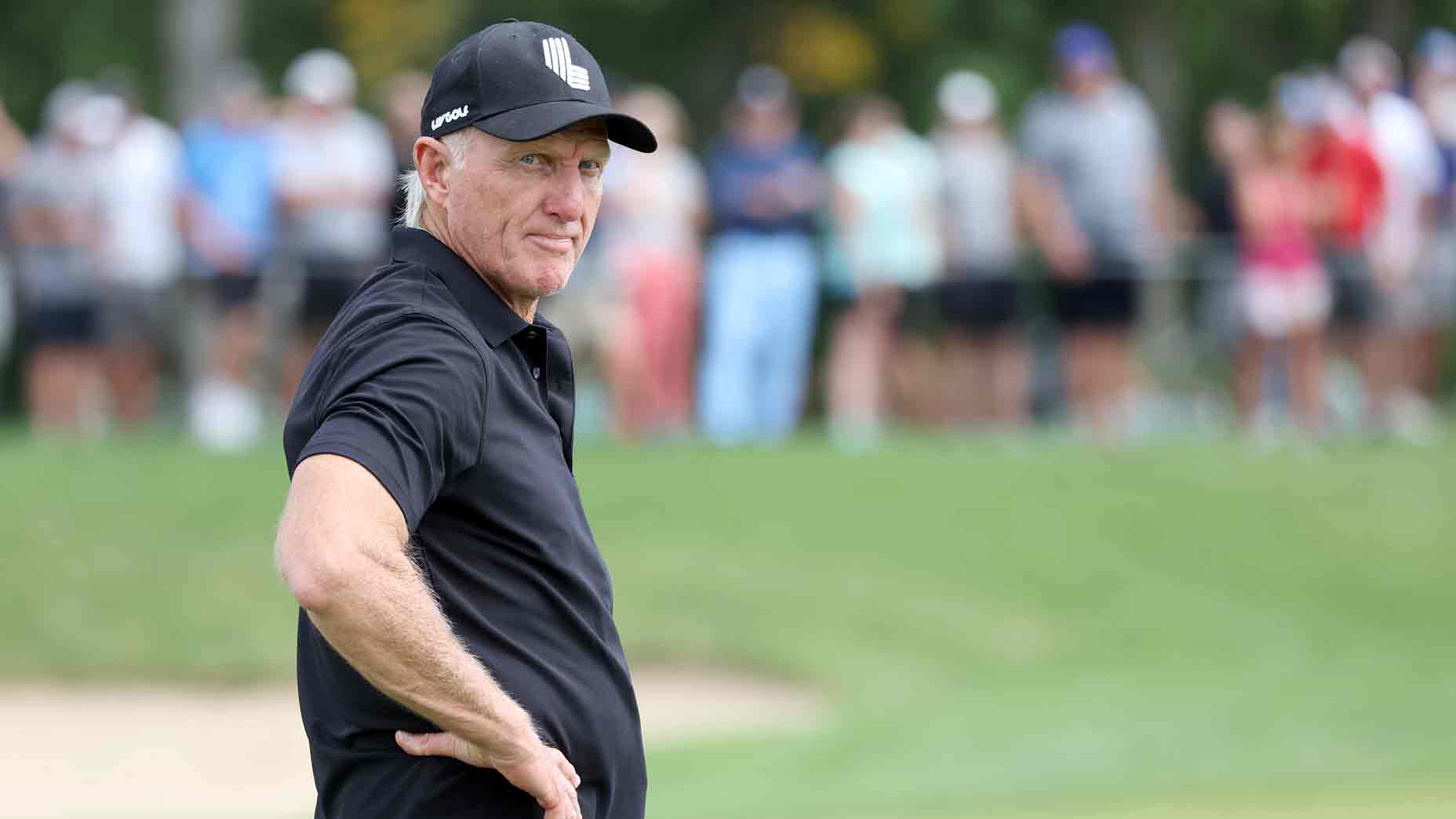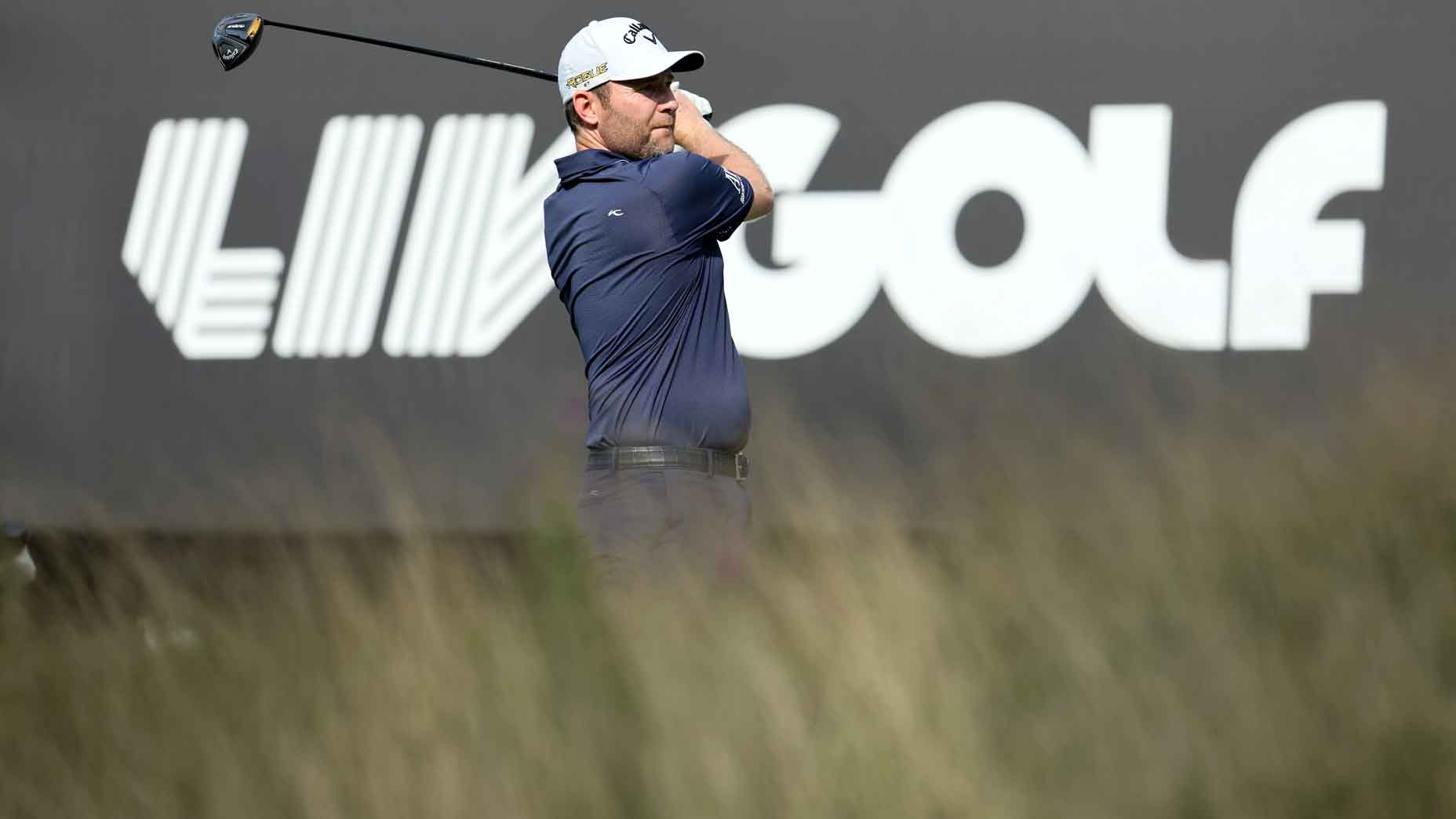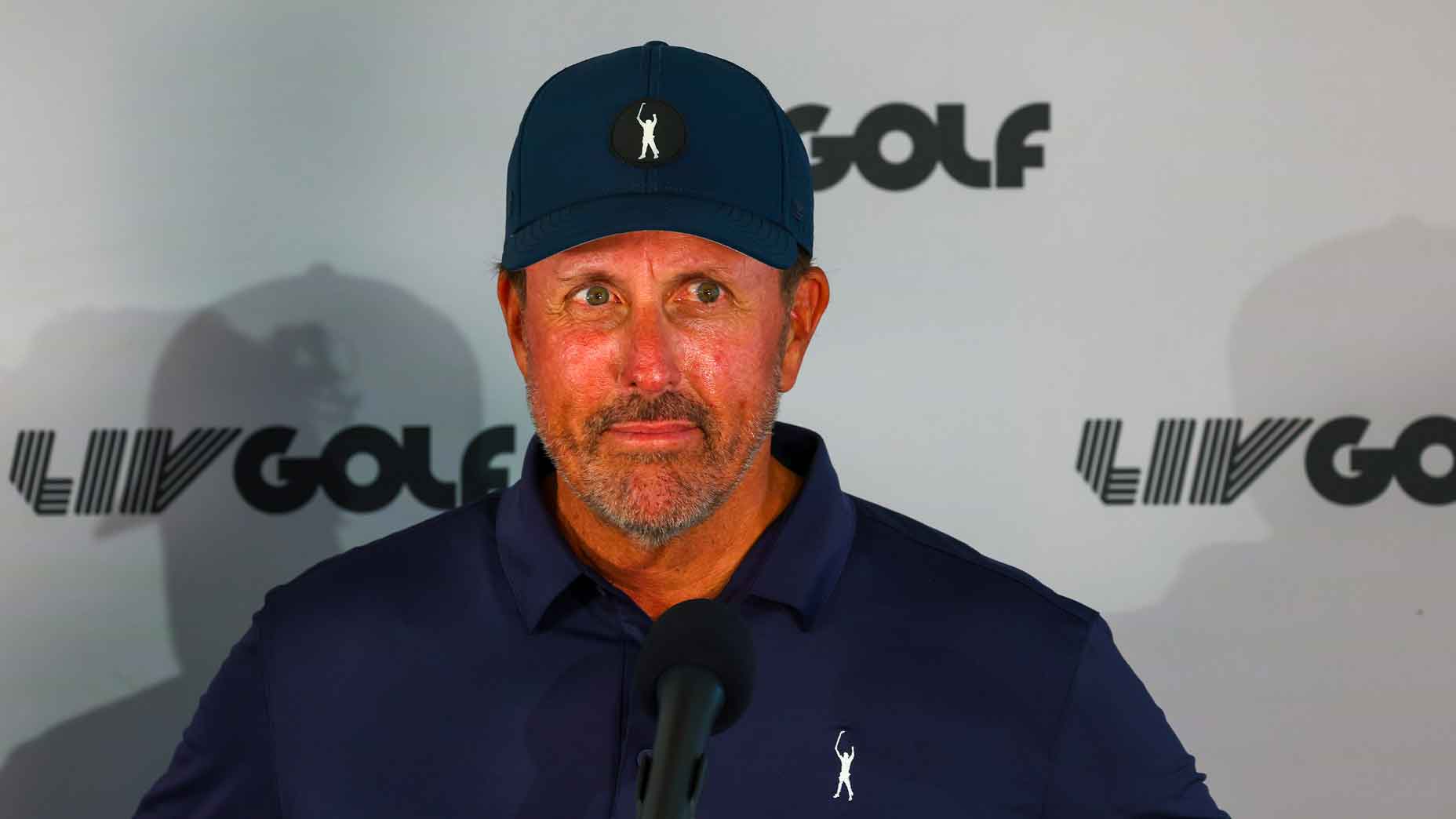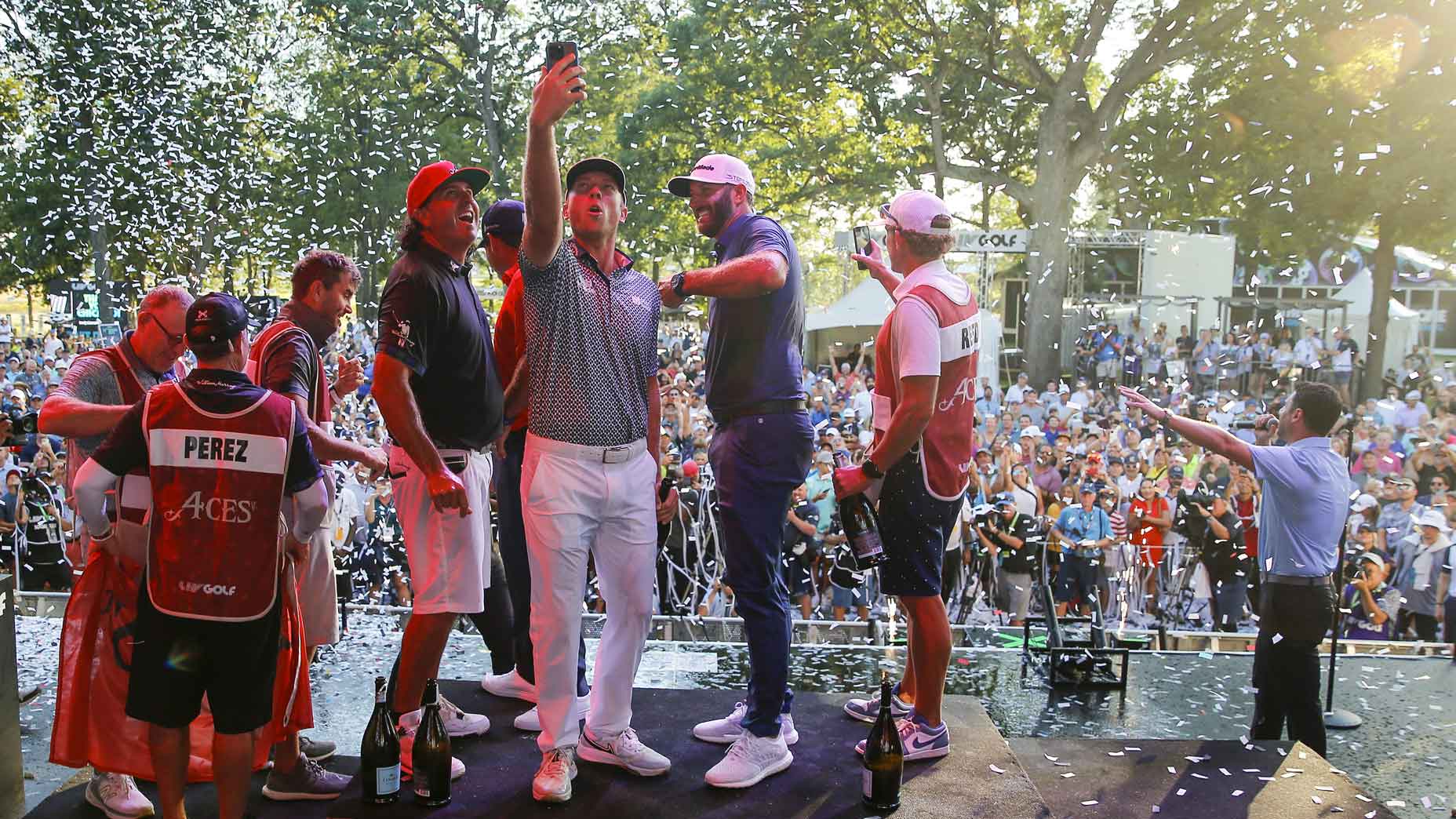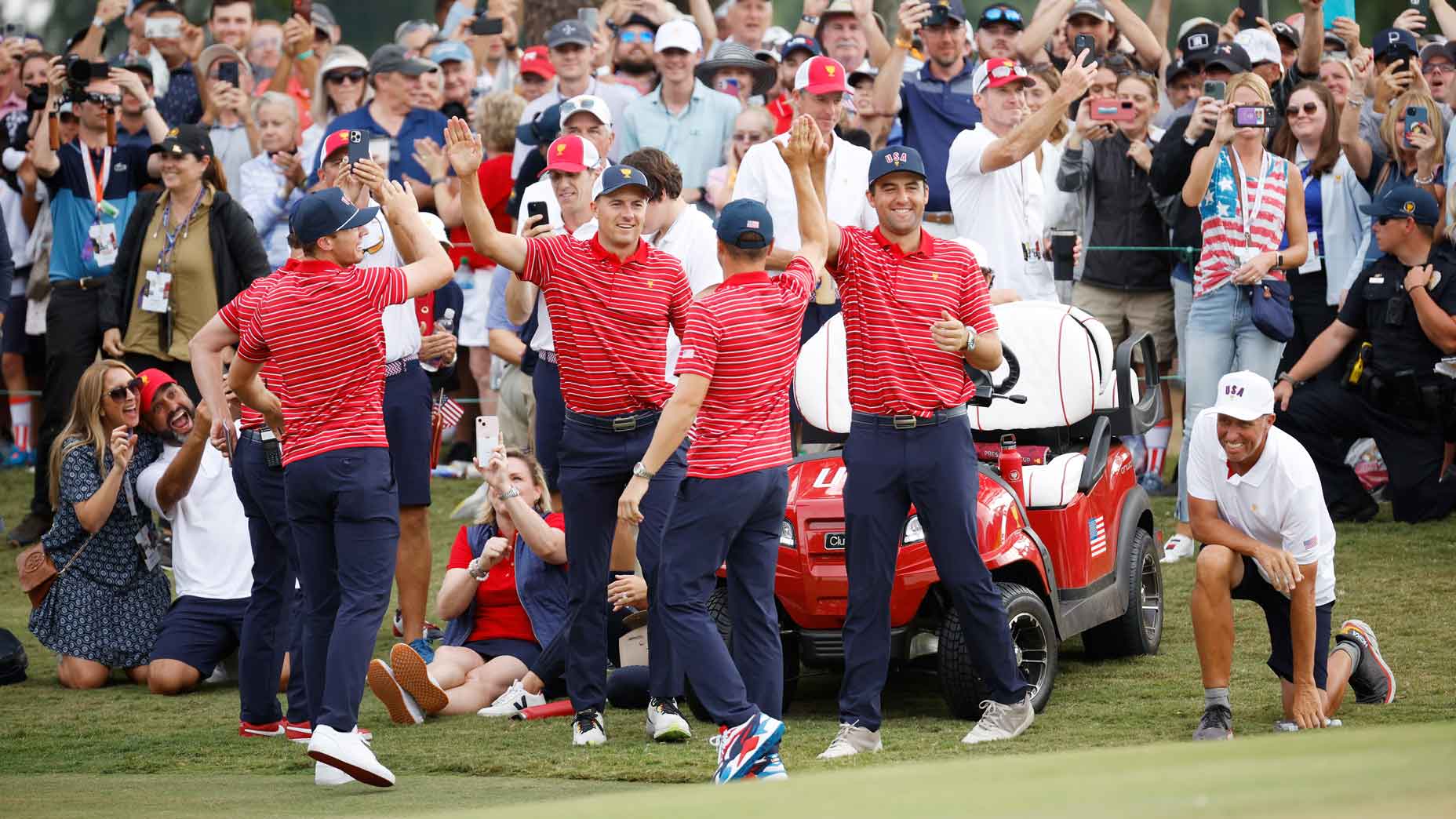Confused by the first LIV golfer court hearing? It hinged on these 5 keys
- Share on Facebook
- Share on Twitter
- Share by Email

Hudson Swafford and Talor Gooch were denied their chance to play in the FedEx Cup this week at a courthouse in San Jose.
Getty Images
The first hearing between LIV golfers and the PGA tour took place this week, and left in its wake plenty of confusion.
Does the PGA Tour maintaining the status quo mean anything for the greater lawsuit? Maybe a little.
Will it reach a trial? Perhaps, but not until September 2023 at the earliest.
So what are we left with? We are left with Judge Beth Freeman’s opinions on particular items presented by both sides. Freeman is a golfer herself, if no maven of the men’s professional game, which is totally fine. That keeps her unbiased and helps us understand this case better through her gut instincts and interpretation of precedents and law.
Below, we’ve spelled out a number of the important points of consequence from the first hearing, which was simply a request for a temporary restraining order that would have allowed three plaintiffs to play in the FedEx Cup. As you may know, Judge Freeman denied the request, and we can understand some of it through her written order.
1. Tricky Tour regulations phrasing
A major differentiation of opinion in the TRO hearing was whether or not Talor Gooch, Hudson Swafford and Matt Jones deserved a “stay” of sanctions because their appeals were still processing. Or what constituted the exact suspensions under the trio’s appeal. If their appeals were still being handled, PGA Tour regulations would grant a stay, and would thus allow them into the Playoffs.
The issue at hand is any ambiguity in the wording of the Tour’s regulations, particularly Section E, Article VII. The plaintiffs view it one way — Gooch even contacted a Tour representative on Aug. 1 to ask if he would earn a stay — while the Tour had its own interpretation.
On that matter, Judge Freeman said, “The court must give proper deference to a private organization’s interpretation and application of its disciplinary rules.” She considered the Tour’s interpretation “not unreasonable,” and that was that.
2. LIV’s stable of top golfers
Interestingly, it was the PGA Tour providing information about how successful LIV Golf has become. The Tour used the top 10 ranking from its inaugural Player Impact Program to show that half of the players listed had signed with LIV.
‘They’ve been brainwashed:’ Billy Horschel sounds off on LIV players’ expectationsBy: Jack Hirsh
“That’s remarkable,” Judge Freeman said during the hearing.
It is remarkable, but does the PIP reward the best golfers? Not exactly. It rewards the most “impactful,” to use Tour messaging, which is why Tiger Woods took the top spot despite not hitting a single shot in Tour competition all year.
As you can see in Judge Freeman’s written order, there may be a slight misunderstanding or misinterpretation of best vs. most impactful. Included as a footnote in the order, the PIP players are listed as the “top PGA Tour players in 2021,” which, again, could be an issue of semantics. Look for the definition of that evidence’s value to be more plainly decided in future hearings. Only two golfers from the year-end world golf ranking were included in the PIP (Dustin Johnson and Bryson DeChambeau).
3. LIV’s need to establish its validity
As a means of establishing its place in the golf ecosystem, plaintiffs introduce LIV Golf as a “fan-friendly alternative to the PGA Tour,” in which it describes the ways the Tour’s product has gone stale. Judge Freeman seized upon that reasoning, saying that it undermined the plaintiffs’ position.
How exactly?
By comparison, LIV being discussed as the future of the game de-emphasizes the importance for players to play both tours right now. In her order, Freeman was rather dismissive, saying “If LIV Golf is elite golf’s future, what do TRO Plaintiffs care about the dust-collecting trophies of a bygone era?”
That interpretation may end up being massaged as the proceedings move forward, but it’s still an insight into Judge Freeman’s thinking.
4. The quantifiable value of FedEx Cup earnings
Proving “irreparable harm” is one of the four defined facets of earning a temporary restraining order. The plaintiffs needed to argue that they would be irreparably harmed by not being allowed into the FedEx Cup, in which they had rightfully earned a place. Gooch, for example, had earned enough FedEx Cup points to rank 20th. But Judge Freeman did not think the plaintiffs counsel sufficiently argued for irreparable harm.
Do LIV players stand to lose big on endorsement deals? It’s complicatedBy: Ryan Barath
They did argue, via a consultant, that there were extreme potential losses by not being allowed to play. Every year the FedEx Cup is a gigantic money grab for competitors. But beyond that, the theoretical harm was not well argued, Freeman said. And since the FedEx Cup is distinctly quantifiable, those funds are extremely reparable. So much so that missing out on the FedEx Cup was clearly factored into “their calculus” as Judge Freeman put it:
“In fact, the evidence shows almost without a doubt that they will be earning significantly more money with LIV Golf than they could reasonably
have expected to make through Tour play over the same time period.” If the “harm” in this case was strictly money lost by missing the FedEx Cup, it was more than gained back via LIV Golf contracts.
5. Per se vs. Rule of Reason
This one is for the true legal nerds, but could feature in future proceedings. In terms of anticompetitive movements, perhaps the strongest case the larger group of plaintiffs still holds is arguing for a “group boycott” under the Sherman Act, which Congress passed in 1890 as a “comprehensive charter of economic liberty aimed at preserving free and unfettered competition as the rule of trade.”
LIV Golf plaintiffs will lean on that law to argue that the PGA Tour unlawfully joined into an alliance with the DP World Tour to keep LIV Golf from establishing itself in the ecosystem. That complaint will go so far as to allege the Tour has convinced the governing bodies — hosts of the major championships — of doing the same.
The plaintiffs argued that the PGA Tour has committed a “per se” violation of the Sherman Act, rather than a “rule of reason” violation. The PGA Tour quickly argued that “per se” violations only take place with engagement between horizontal competitors, and evidence presented by the plaintiffs suggests the competitors at hand are not at all horizontal. Indeed, the PGA Tour and DP World Tour exist on very different levels of the pro golf atmosphere.
Is there potential for the plaintiffs to argue in the future for a “group boycott” under the “rule of reason”? Certainly. Judge Freeman even acknowledged that truth in her order, admitting that the plaintiffs’ “rule of reason” arguments were limited to footnotes. And as she so plainly said during the proceeding, she does not read footnotes.
Latest In News

Sean Zak
Golf.com Editor
Sean Zak is a writer at GOLF Magazine and just published his first book, which follows his travels in Scotland during the most pivotal summer in the game’s history.

